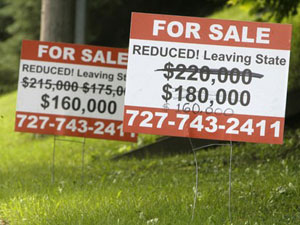 Doug Duncan told the National Economists Club at lunch yesterday in D.C. that “We’re not there yet [on stabilizing the housing market].” “So many things are going on that it’s hard to sort out the effects.” The most important driver of the housing market is private sector payroll. With the unemployment rate stuck above 10% for most of the rest of this year, the housing market turnaround will await stronger jobs growth.
Doug Duncan told the National Economists Club at lunch yesterday in D.C. that “We’re not there yet [on stabilizing the housing market].” “So many things are going on that it’s hard to sort out the effects.” The most important driver of the housing market is private sector payroll. With the unemployment rate stuck above 10% for most of the rest of this year, the housing market turnaround will await stronger jobs growth.
Regional differences are quite large. Speculative activity was concentrated in California, Nevada, Arizona, and Florida. The upper Midwest has suffered tremendous job losses, hurting home prices there too. Elsewhere, once recovery takes hold, housing will return to normal, but, in those areas, it will take longer.
Duncan estimated excess housing supply at 7 million units : 780,000 excess homes based upon a 1.7% historical vacancy rate; 1.2 million rental units based upon a 7.7% vacancy rate; 500,000 vacant units currently held off the market; and 4.6 milion homes which are now seriously delinquent. If historical demographic demand holds constant, it will take until early 2013 to work off those excess 7 million units.
Distressed sales are currently running 30% to 40% of total sales. One in four homes in America today is worth less than it’s mortgage. There’s little research so far on how low home values have to go before homeowners walk away, but we’re learning right now.
We’ll have to find a sustainable homeownership rate. It peaked in June 2004 at 69.2%, and it appears it could stabilize around the current level of 66%.
“The central issue [for a housing recovery] is policy.” Fifty percent of homes purchases today are FHA insured, up from 2.6% in 2005. The home purchase tax credit is behind many sales. The Fed has bought $1.25 trillion of mortgage backed securities, but it will stop at the end of March. Duncan estimated this would raise mortgage rates 25 basis points, but other estimates range from 0 to 75 basis points. Policy stimulus will drive the housing market until employment recovers.
Disclaimer: This page contains affiliate links. If you choose to make a purchase after clicking a link, we may receive a commission at no additional cost to you. Thank you for your support!



Leave a Reply